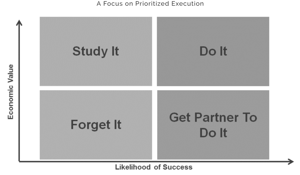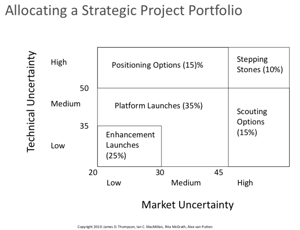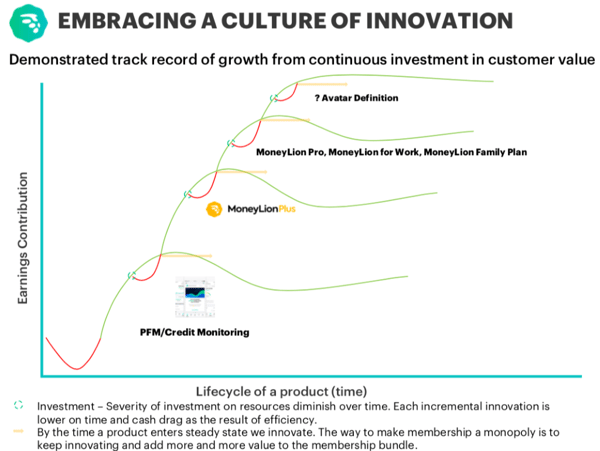If you told me before our 7th annual CEO Summit that Lenard Marcus would be walking everyone through a shopping experience at Victoria’s Secret, I’m fairly certain I wouldn’t have believed you. But sure enough, the business case behind this example and others offered by Professor James Thompson became my most meaningful takeaway from the event.
In May, we took Edison CEOs back to school (to Wharton) to explore the intersection of marketing and finance, Professor Thompson led a session on business model innovation. Clearly, innovation is crucial for growth-stage companies; without it, a company’s growth and profits will inevitably decline as competitors innovate and steal market share. But what is innovation, really? Wharton definition: A valuable solution to a clearly identified market need that will be necessary in the future. Valuable is a critical qualifier here, as we learned in a prior session that innovation cannot be considered innovation unless it delivers a return.
With this idea in place, innovation experiments – project trials -- are the best way to test and learn before moving full steam ahead on making investments. Mature businesses may have multiple experiments happening at any given time. Growth-stage business should have fewer in the interest of focus and prioritizing use of capital.
My partner Kelly Ford often uses the below quadrant to help companies think about prioritization.

This simple construct can be sufficient for less mature businesses. Wharton, however, encourages a deeper look at prioritization, beyond likelihood of success and economic impact, to contemplating levels of risk and uncertainty.
You’ll see that this second quadrant-based construct is more prescriptive, illustrating where companies should allocate resources on various experimental projects.

Projects with low and medium levels of market and technical uncertainty should have the bulk of resources, while projects with high uncertainty should be experimented with, albeit sparingly. If the high-risk projects look promising, companies are encouraged to continue investing in development, as this may lead to a temporary advantage over competitors who have not attempted these projects due to uncertainty. Of course, projects with a dim outlook should be pruned quickly to mitigate the financial downside.
With this construct in mind, we explored three distinct examples of businesses that identified a market need and successfully innovated their business model to take advantage of the opportunity.
1. Victoria’s Secret
Lenard Marcus was tapped to describe his first-ever experience at the lingerie retailer. Step by step, we could feel Lenard’s discomfort (oh, the awkwardness), as the shopping assistant guided him through the store and helped with the purchase process. But where is the business model innovation in Lenard’s experience? Well, classical music plays in every Victoria’s Secret store to relax buyers and enhance the shopping experience. CDs of this music are also available for purchase at the register. In fact, Victoria’s Secret has produced five of the ten classical music albums that have gone platinum (having sold over one million copies). The company recognized that $20 was cheap compared to the pricey lingerie being purchased by uncomfortable male shoppers. Purchasing (and later playing) the same music that was heard while shopping was an inexpensive “insurance” that the gifts would be well accepted by the shoppers’ significant other.
Although simple, this business model (product line extension) innovation delivered huge ROI for Victoria’s Secret. At a production cost of roughly $5 million per album and selling millions of copies at $20 each, the company has enjoyed tens of millions in revenue. Sounds pretty innovative to me!
2. Oral-B Toothbrush
One of the simplest personal care products – the toothbrush. Several years ago, the American Dental Association (ADA) partnered with Oral-B on a research study. The ADA’s goal was to calculate how often toothbrushes should be replaced by consumers. The study found that for optimal plaque removal and toothbrush performance, brushes should be replaced every three months. However, the actual average replacement time was 9 months. Oral-B immediately realized that this dynamic offered an opportunity to drive a 3x increase in product sales. Of course, more than a published research study would be necessary to convince consumers.
Oral-B immediately kicked off an experiment in their lab to tackle the opportunity. Their scientists eventually developed a dye that would fade after three months of average toothbrush use. This blue dye was then applied to the white bristles, thus creating the Oral-B Indicator Toothbrush. Oral-B patented the technology, introduced the new toothbrushes to market, drove a tremendous increase in toothbrush replacements, and became the only brush endorsed by the ADA. An experiment turned true innovation out of Oral-B’s strategic project portfolio.
3. Amazon
During the early years of Amazon’s ecommerce growth, employees began gathering behavioral data on each visitor through the shopping and checkout process. Not unlike other ecommerce sites, Amazon saw low click-through rates to the checkout page. In fact, at the time, a 30% click-through rate was a goal and a win.
Amazon ran studies and found that something called PBS was occurring – premature browser shutdown. At the time, there was a perceived risk of typing in one’s credit card number on a website and skepticism of with whom it was being shared online (keep in mind, a shopper back then would have to type their credit card info for every single purchase). To solve this problem, Amazon partnered with a PCI compliant firm to begin storing data off-site and have it saved for future checkouts.
After successfully developing this technology, Amazon patented and installed the code on its website, contributing a vastly higher click-through rate since their credit card info was saved and prefilled. Taking this innovation one step further, Amazon licensed the patent to countless online retailers, including Apple. To this day, nearly every ecommerce site that has your credit card info saved pays a royalty to Amazon on each purchase. How innovative is that?
And a 4th example.... Inspired by the discussion at Wharton, one Edison CEO, Dee Choubey, took these learnings back to his team to create MoneyLion's version of the innovation cycle at his company.
The company began its journey as a personal finance management and credit monitoring app, providing users with a better understanding of their financial health. In addition to these free services, MoneyLion provided personal loans to its customers and qualified them using sophisticated algorithms. As these products entered a steady state, MoneyLion experimented with and then built a new product – MoneyLion Plus. This popular subscription service offers lower rates for loans, additional investment management and credit monitoring services, and rewards.

MoneyLion Plus has experienced tremendous growth and has furthered the company’s upward journey along the innovation curve. The team continuously evaluates options within its Strategic Project Portfolio, so that when MoneyLion Plus eventually reaches a steady state, they will be prepared to innovate and remain a market leader. The next new product will be a VIP Banking service that provides checking accounts, debit cards, an ATM network, and 0% APR cash advances to customers.
The future is bright for growth-stage companies, like MoneyLion, when they become aces at embracing innovation strategies and practices, like the ones we learned about at Wharton.

